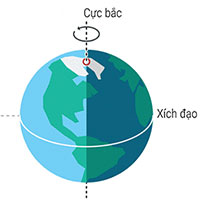According to experts, in the process of evolution, quite a lot of superfluous parts will be removed and completely disappear.
Every day that passes, humans are still constantly developing and evolving. But to what extent will we evolve? And what will our appearance 100,000 – 200,000 years from now?
In the first chapter of The Descent of Man , Charles Darwin said that in the future 10 or more body parts will become useless. So what are those parts, let’s check right away.

Compared to ancient times, humans have evolved, losing a large part of body hair. There is no denying that women are seen as more attractive when they have smooth, hairless bodies – this is considered an advantage for sexual attractiveness.
Over time, the female will evolve to possess the most perfect level of hair and sometimes not. And the same thing happens in men, but to a lesser extent.

Some animals such as dogs, rabbits… can wag and wiggle their ears independently thanks to the Auriculares ear muscle group.
This is the muscle on the outside of the ear, responsible for rotating and adjusting the ear to focus the hearing on a particular sound emitting position.
Like dogs, cats… they prick up their ears to listen to their prey. But now humans do not need to prick their ears to locate prey anymore, so this ear muscle will be weak and gradually disappear in the future.

A lot of evidence shows that, in the past 100,000 years, human teeth have halved in size, the jaws are also smaller – consistent with the present.
And in the future, this trend will also continue to grow. Followed by a change in the jaw – the wisdom tooth will disappear.

About 1 – 3% of the world’s population is found to have an extra rib, called a cervical rib. It is located just above the collarbone.
Some people have neck ribs on the left side, some on the right side, and some people have it on both sides. However, sometimes they are made incomplete, even as thin as a few strands of fabric.
However, they can compress blood vessels and nerves around the neck leading to neck and shoulder pain… But the good news is that they can disappear in the future.

In the olden days, before walking on two legs, we used both hands and feet to climb…
Since walking “straight”, the size of the toe gradually narrowed and evolved as it is today. The big toes – or big toes are responsible for keeping balance for the body, while the little toe seems to become unnecessary, more inferior.
But studies show that our body’s center of balance is still moving inward. This means that our toes will gradually become unnecessary. If this evolutionary trend continues, we will no longer need toes.

The coccyx or tailbone is the remains of the tail that most mammals still use for balance.
Many people assume that our gravity goes down the spine, so there is no need for another appendage to balance the sizable weight from the head.
So having surgery or being born without a tailbone has no negative consequences. And in the future, most likely the tailbone will disappear.

The common ancestor of birds and early mammals had a third eyelid. The eyelid layer acts as a horizontal sliding door that helps form a barrier that protects the eye from the sun.
It also works as a tool to sweep away debris and dust pushed out through the eye socket. Over time, the third eyelid in humans is disabled, leaving only a small trace and it becomes a useless organ. Experts say that gradually this third eyelid also completely disappears.

Both men and women have nipples and they appear and form during fetal development.
However, male nipples are considered extremely useless when men do not have milk and do not have to breastfeed (regardless of the case of hormone disorders), what do they exist for?
So according to the theory of evolution, it is very likely that in the future these knobs will disappear.
Also called sphenoid sinus . This type of sinus is located very deep in the nasal cavity, in an extremely dangerous and difficult to locate position. Therefore, when unfortunately infected with infection, doctors need to use modern clinical methods such as endoscopy, tomography… to be able to make an accurate diagnosis.
The problem is that the effect of the sphenoid sinus so far has not been understood by science. Many people wonder why the human body has such a complicated, complicated system that is so easily infected.
Darwin’s point is the name for the folded skin above the ear. Indeed, this is one of the most useless parts of the “ear-hole”. It doesn’t seem to have any effect, it just collects dust and is prone to infection.
Among the primates, the closest to humans are chimpanzees and gorillas, they have 13 ribs, 1 more than us. But as it turns out, about 8% of the population still owns a 13th rib branch, even though it doesn’t do anything.
This is the “tendon muscle” (palmaris longus) – the muscle fiber that extends from the wrist towards the elbow. And only about 10% of the “lucky” population owns it.
According to Dorsa Amir, an anthropologist at Boston University, this muscle fiber is a leftover from the past, when our ancestors used their forelimbs to climb. But today, this muscle fiber has no other use than as evidence to support Darwin’s theory of evolution.

